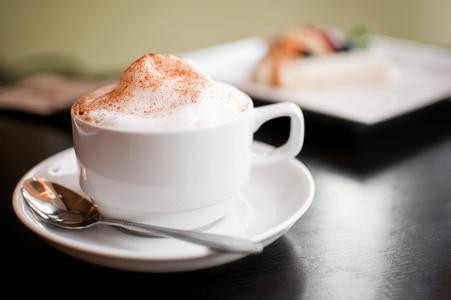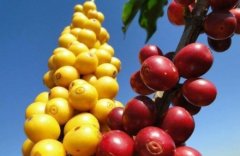Knowledge of coffee trees about planting and picking coffee trees
One of the characteristics of a coffee tree is that its fruit can bear fruit several times a year, and another is that flowers and fruits coexist at different stages of ripening. If the fruit is too ripe, the beans in it will rot. If the beans are not ripe, the beans will not ripen by themselves. So bean pickers often go through the same tree several times to look for ripe fruit, but they only get two pounds of coffee beans back and forth several times, usually the average yield of a tree is 2 pounds a year.
Coffee farmers who produce low-grade coffee beans like to use labor-saving methods to harvest beans, but in this way, the quality is not pure, reducing the taste of coffee and lowering the grade of coffee. The way to pick coffee beans in some parts of Africa is to shake the coffee tree, shake the fruit to the ground, and pick it up from the ground before the fruit rotts. Low-grade coffee is produced in most parts of Brazil, where coffee is picked by picking all the leaves, flowers, ripe and green fruit from the branches at once, and it takes two years for the damaged coffee trees to recover.
The coffee tree has delicate white flowers that smell like oranges and jasmine. Sometimes it is just a tree blooming alone, like a young bride, sometimes the whole coffee garden is in full bloom, it looks like a sea of white flowers, beautiful and intoxicating. But the florescence is fleeting. Within two or three days, the petals dispersed with the wind, leaving only the remaining fragrance spinning in the air.
Before long, small fruits appear in piles, first green, then yellow, then red or crimson, and can be picked almost black. In Jamaica, bats are the first to know whether the fruit is ripe or not. by sucking coffee pulp at night, they are telling people that the fruit is ripe and ready to be picked. The oval fruit gathers tightly around the branches, with slender, smooth dark green toothed leaves on both sides of the branches. The leaves on the sunny side are harder, the back is softer, the edges are fan-shaped, and the branches are opposite from the trunk.
Coffee trees are usually bred in nurseries, grow into seedlings, and then moved to coffee plantations a year later, in full compliance with the original Arab method of planting and cultivating coffee trees. In the first four or five years of its growth, the coffee tree will continue to take root downward, develop its trunk upward, and develop into an umbrella shape so that it can bear rich fruit in the future.

Important Notice :
前街咖啡 FrontStreet Coffee has moved to new addredd:
FrontStreet Coffee Address: 315,Donghua East Road,GuangZhou
Tel:020 38364473
- Prev

Basic knowledge of boutique coffee storage of coffee beans
Freshly roasted coffee beans release hundreds of chemicals, which takes a day or two to dissipate to achieve the best taste. Nowadays, many high-quality roasters pack coffee beans in sealed bags with one-way valves to release the gas and prevent coffee beans from being stored in destructive gases. This kind of packing helps to keep the coffee
- Next

Coffee tree common sense Coffee tree origin in Ethiopia
The coffee tree is native to Ethiopia in Africa. Coffee tree in botany, belongs to the Rubiaceae coffee subgenus evergreen tree, and generally known as coffee beans, in fact, coffee tree fruit seeds, only because of the shape like beans, so called coffee beans. Climate is the decisive factor for coffee cultivation. Coffee trees are only suitable for growing in the tropics or subtropics, so latitude 25 degrees north and south.
Related
- Beginners will see the "Coffee pull flower" guide!
- What is the difference between ice blog purified milk and ordinary milk coffee?
- Why is the Philippines the largest producer of crops in Liberia?
- For coffee extraction, should the fine powder be retained?
- How does extracted espresso fill pressed powder? How much strength does it take to press the powder?
- How to make jasmine cold extract coffee? Is the jasmine + latte good?
- Will this little toy really make the coffee taste better? How does Lily Drip affect coffee extraction?
- Will the action of slapping the filter cup also affect coffee extraction?
- What's the difference between powder-to-water ratio and powder-to-liquid ratio?
- What is the Ethiopian local species? What does it have to do with Heirloom native species?

